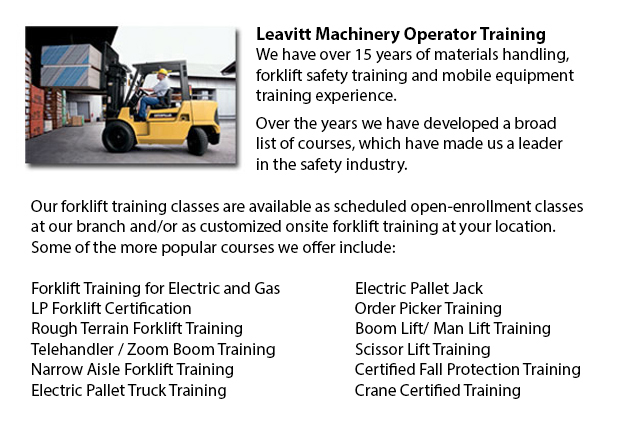
There are in actual fact two different kinds of forklifts within the materials handling market, the industrial model and the rough terrain model. Rough terrain forklifts originally arrived on the marketplace in the 1940's and were predominantly used on irregular roads, ideal for areas where no paved surfaces were available, like building sites and lumberyards.
Rough ground forklifts usually use an internal combustion engine with a battery for power. The engines can function on propane, diesel or gasoline. Many suppliers are playing with rough ground forklifts that consume vegetable matter and run from ethanol. Substantial pneumatic tires with deep treads characterize these forklifts to allow them to clutch onto the roughest ground type devoid of any slippage or sliding.
Many of the earliest versions of rough terrain forklifts had the ability to lift in excess of 1000 lbs, via blades that could slide underneath the item, haul it marginally and move it to a different location. After ten years on the market, rough terrain forklifts were reinforced with supplementary carrying power, increasing the possible load to more than 2000 lbs. Telescoping booms were added in the 1960’s, allowing them to stack resources much higher than in earlier years. The telescoping model feature is a staple of most all terrain forklifts today. Present styles are capable of managing well over 4000 lbs thanks to the continued improvements over time. Telescoping capability has also improved with some models achieving a height of 35 feet. Worker safety has also become a focus with a lot of rough terrain forklifts currently manufactured are fitted with an enclosed cab for the operator, as opposed to the older open air seating capacity.
The rough terrain forklifts accessible today work just as well on covered floors as on unpaved surfaces. These all terrain forklifts are being marketed for their usefulness allowing corporations to transfer items from outside the facility to the inside or vice versa.
-
Crown Forklift
More -
Toyota Forklift
In the United States, Toyota Materials Handling inc., or TMHU, has been the top selling lift truck provider since 1992. This company has been situated out of Irvine, California for well over 40 years, offering a comprehensive line of quality lift tru... More -
Clark Forklift
Performing worldwide, there are at this time 350,000 Clark forklifts and lift vehicles in operation, with in excess of 250,000 of those in commission in North America. Clark has five main lines of lift trucks across the globe, making it one of the mo... More -
Pallet Lifts
A pallet haul is an appliance built in particular for moving pallets of irregular weights and dimensions. They can be utilized in conjunction with cranes, forklifts and other heavy duty machines as an attachment piece or to be utilized on their own.... More -
Pneumatic Forklifts
Pneumatic forklifts are referred to as pallet lift trucks or pump trucks and are extensively used in warehouses and transport facilities to transfer materials on pallets. Pneumatic jacks comprises a set of steel blades mounted on a wheeled counterbal... More

Forklift Certification Coquitlam
TOLL FREE: 1-888-254-6157
Coquitlam, British Columbia
forkliftcertificationcoquitlam.com
Email Us
About Us


